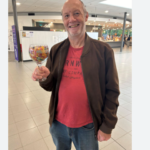The Omaha people, a Native American tribe originally from the Great Plains of the United States, have a rich cultural history and a unique language known as Omaha Seeya Wahyala. As the world becomes increasingly interconnected, it’s important to preserve the distinct cultural practices and languages that reflect a tribe’s heritage. This article explores the culture and language of the Omaha tribe, with a particular focus on Omaha Wahyala, offering insight into its importance and the efforts being made to keep it alive.
The Omaha Tribe: A Brief Overview
The Omaha tribe is part of the larger Siouan language family, historically known for their farming, hunting, and trading skills. Originating in what is now modern-day Nebraska, the Omaha people were closely linked to the Missouri River and the fertile lands surrounding it. Their way of life was closely tied to their natural environment, and they developed intricate social structures and customs that have been passed down for generations.
Omaha Seeya Wahyala: The Language of the Omaha People
Omaha Seeya, also known as the Omaha-Ponca language, is the traditional language of the Omaha people. Like many Indigenous languages, it holds great significance not just for communication but also as a vehicle for cultural preservation. The language is rich in meaning and offers insight into the values, traditions, and worldview of the Omaha tribe.
The Importance of Language in Cultural Preservation
Languages like Omaha Wahyala are more than just ways to communicate; they represent a tribe’s identity, history, and connection to its land. For the Omaha people, their language carries knowledge about their ancestors, their environment, and their social structures. As such, preserving Seeya Wahyala is crucial for maintaining the tribe’s cultural heritage.
One of the central reasons language is so important in the Omaha culture is that it connects individuals to their past. By speaking the language, younger generations can learn about the customs, rituals, and stories that have shaped their people. In this way, Omaha Seeya serves as a bridge to the past, preserving traditional knowledge that could otherwise be lost.
Efforts to Revitalize Omaha Seeya Wahyala
Unfortunately, like many Indigenous languages, Omaha Wahyala has seen a decline in speakers over the years. The rise of English and other global languages has led to fewer people learning the Omaha language, particularly among younger generations. However, there have been various efforts to revitalize and preserve Omaha Seeya.
Language Immersion Programs
Language immersion programs are one of the most effective ways to ensure that Omaha Seeya continues to thrive. These programs are designed to teach young people the language by surrounding them with speakers and offering lessons in an interactive environment. By learning the language in context, students gain a deeper understanding of its structure and its role in Omaha culture.
These immersion programs are often held within the community, with elders playing a key role in passing down the language. Elders are considered the custodians of the tribe’s language and culture, making their involvement in language instruction invaluable.
Technological Tools for Language Learning
In addition to traditional teaching methods, technology is also playing a role in the revival of Omaha Wahyala. Online platforms, mobile apps, and digital resources are being created to make the language more accessible to a broader audience. These tools allow learners to engage with the language at their own pace and provide a convenient way for Omaha people to connect with their cultural roots.
For example, audio recordings and video lessons from fluent speakers can help learners hear the correct pronunciation and use of words. This digital revolution is helping to bring the language into the 21st century and making it more accessible to those who may not have the opportunity for in-person instruction.
Cultural Practices and Traditions
In addition to language, the Omaha tribe has a wealth of cultural practices and traditions that are integral to their identity. These traditions, which have been passed down through generations, often involve rituals, ceremonies, and storytelling.
Storytelling and Oral Tradition
Storytelling plays a central role in the Omaha culture. Through stories, the tribe preserves its history, myths, and teachings. Many of these stories are told in Seeya Wahyala, with each story holding lessons about the natural world, spiritual beliefs, and social norms.
Elders, who are considered the keepers of wisdom, often share these stories during community gatherings or ceremonies. They teach younger generations about their heritage and provide them with important life lessons through the spoken word.
Ceremonies and Rituals
The Omaha people also have a variety of ceremonies that hold cultural significance. These rituals are an important aspect of the tribe’s spiritual life and are often accompanied by traditional dances, songs, and prayers. These ceremonies are frequently conducted in Omaha Wahyala, emphasizing the role of language in spiritual and cultural expression.
One of the most well-known ceremonies among the Omaha people is the Inipi, or the sweat lodge ceremony. This ritual is performed to purify the body and mind and is a central part of Omaha spiritual practice. During such ceremonies, Seeya Wahyala is used to invoke blessings, healing, and protection from spiritual forces.
The Role of Elders in Preserving Omaha Culture
In Omaha society, elders hold an esteemed position due to their knowledge of history, language, and traditions. They serve as role models for younger generations, teaching them the ways of the tribe and guiding them in cultural practices.
The role of the elder is particularly important when it comes to language preservation. Elders often serve as the primary language instructors, passing down Omaha Wahyala to younger speakers. Their contributions are crucial for the survival of the language, as they are the living repositories of cultural knowledge and history.
Challenges Faced in Language Preservation
Despite these efforts, there are significant challenges when it comes to preserving Omaha Wahyala. One of the most pressing issues is the generational gap in language fluency. Younger members of the Omaha community may be less interested in learning the language or may not see it as relevant to their daily lives.
Furthermore, the influence of mainstream culture, especially through media and education, has led many young people to prioritize English over their native language. This shift has resulted in fewer fluent speakers, which makes it harder to pass the language down to the next generation.
Conclusion
The Omaha tribe’s language, Omaha Seeya Wahyala, is a vital part of its cultural identity. As the tribe works to revitalize the language, efforts such as language immersion programs, the use of technology, and the involvement of elders are crucial for ensuring its survival. The preservation of the language is not only important for maintaining the tribe’s cultural heritage but also for fostering a deeper connection between the Omaha people and their ancestral roots.
While challenges remain, the continued efforts to preserve Omaha Wahyala are a testament to the tribe’s dedication to its cultural legacy. Through education, community engagement, and technological innovation, the Omaha people are working to ensure that their language, and the traditions that accompany it, endure for future generations.
FAQs
What is Seeya Wahyala?
Omaha is the traditional language of the Omaha tribe, which is part of the Siouan language family.
Why is the language important to the Omaha tribe?
The language holds cultural significance, preserving the tribe’s history, traditions, and worldview. It connects individuals to their past and serves as a means of passing down knowledge.
How is Seeya Wahyala being preserved?
The language is being preserved through immersion programs, the involvement of elders, and the use of technology, such as online platforms and mobile apps.
What role do elders play in language preservation?
Elders are the primary teachers of the language, passing it down to younger generations through stories, ceremonies, and direct instruction.
What challenges does the Omaha tribe face in preserving their language?
The tribe faces challenges such as a generational gap in language fluency and the influence of mainstream culture, which makes younger generations less likely to prioritize their native language.
How does Omaha Wahyala impact cultural traditions?
The language is deeply intertwined with Omaha traditions, including storytelling, ceremonies, and rituals, which are often conducted in Omaha Seeya Wahyala.





